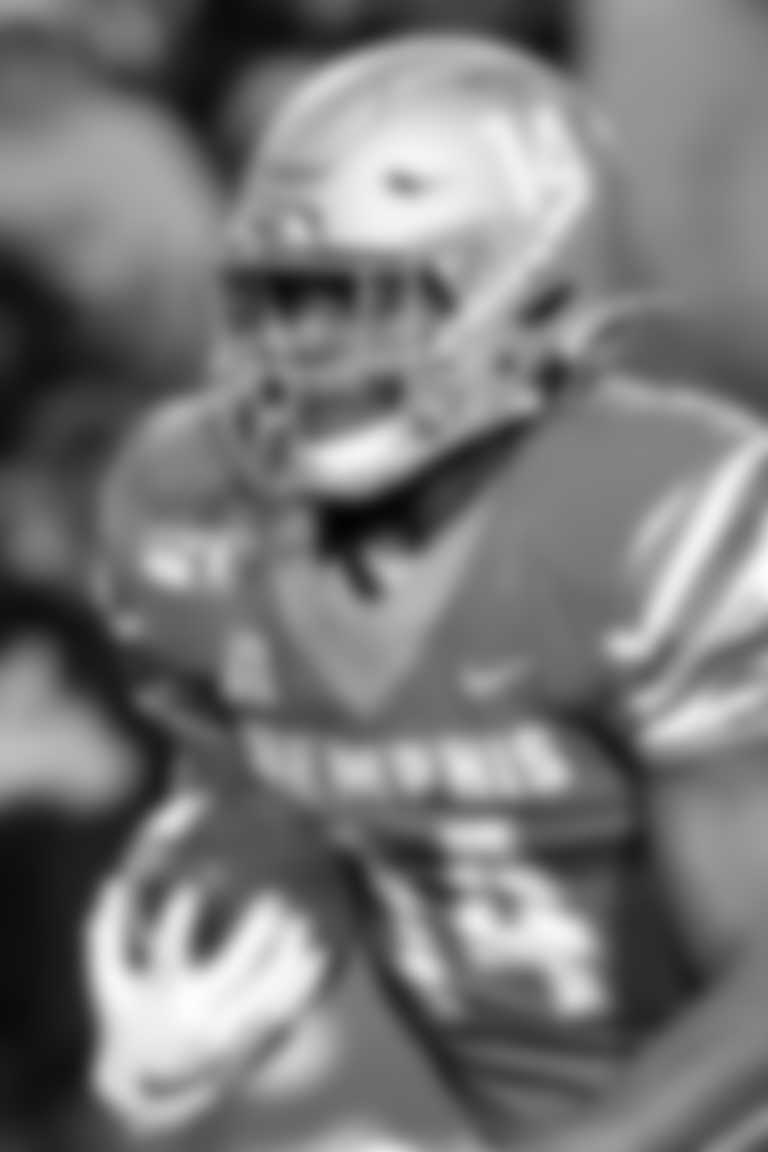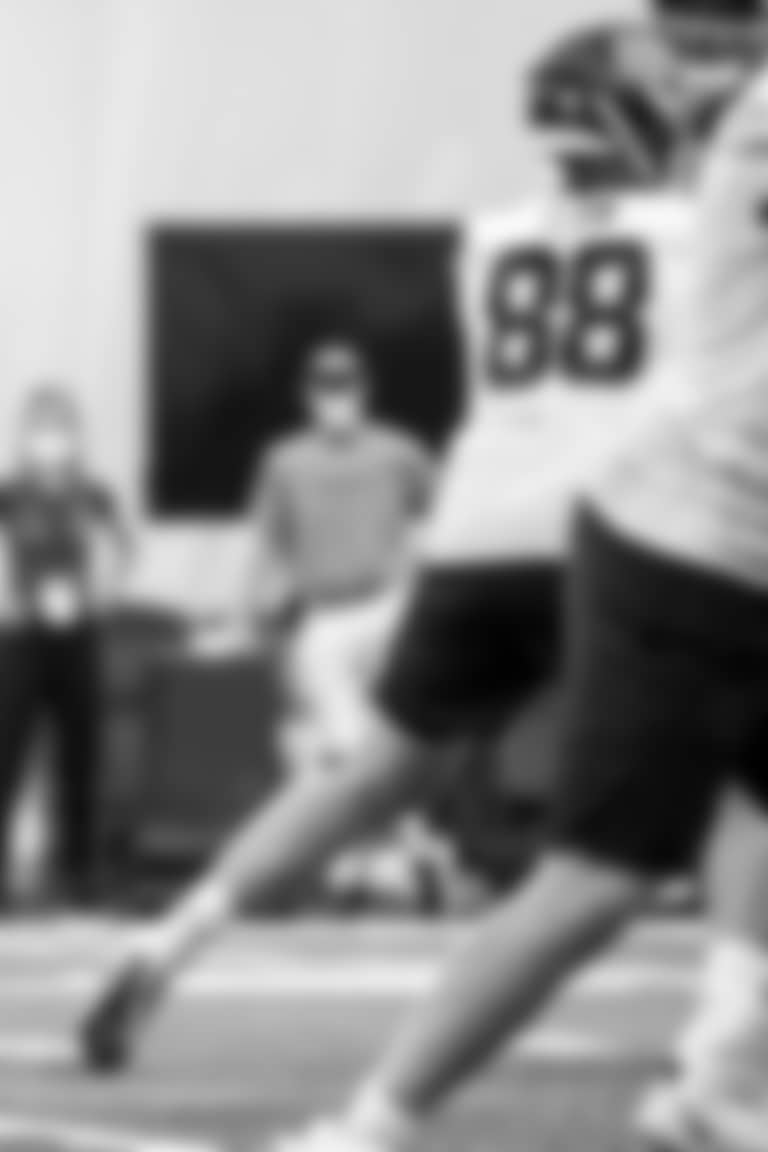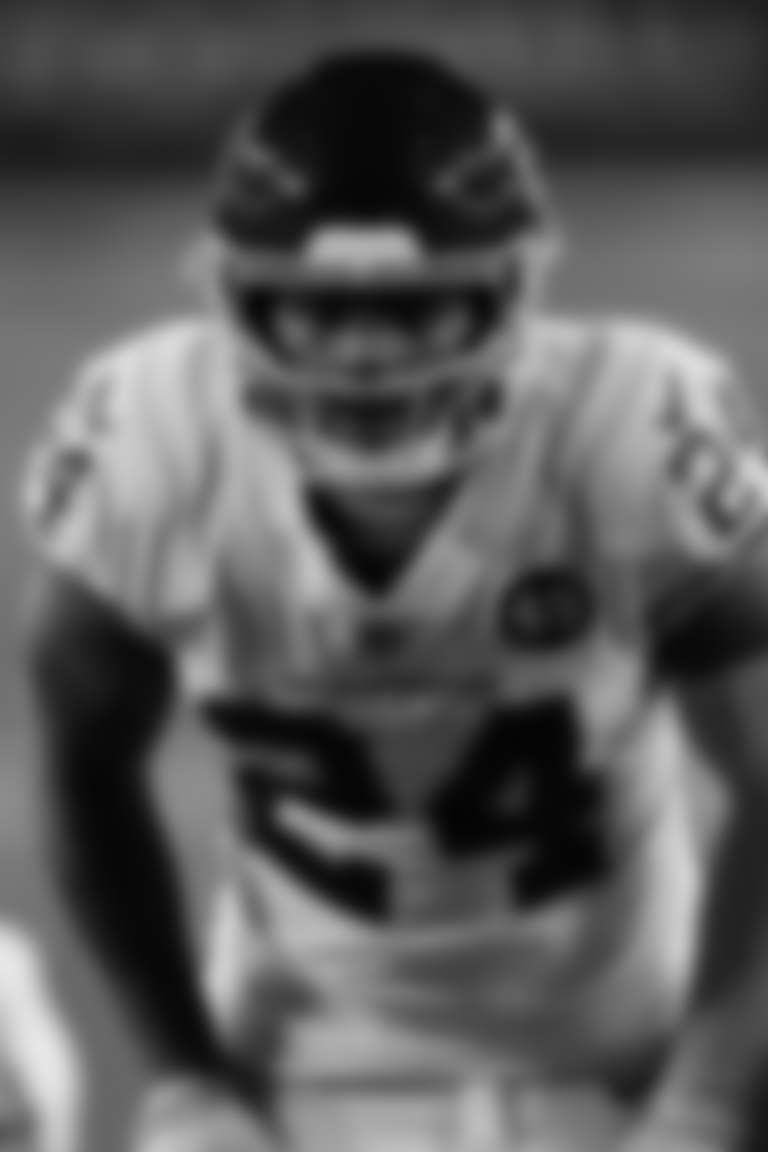It was Antonio Gibson's first Thanksgiving game in the NFL when the Washington Football Team traveled to Arlington, Texas, to play the Dallas Cowboys, and the nation was getting a crash course in what the rookie running back could do.
Gibson's breakout game in front of thousands of fans at AT&T Stadium and millions more watching at home was a clear statement. He amassed 115 yards on 20 carries and scored three touchdowns, including when he broke loose down the left sideline in the fourth quarter for a 23-yard touchdown, waving to safety Donovan Wilson before crossing the goal line. By the time Washington walked away with a blowout win, no one could deny that Gibson has a bright future in this league.
"It's the story of my life. Every time the spotlight comes on, it seems like God is always [looking] down on me," Gibson said after the game. "To be able to come out on national TV and do this is an amazing feeling."
The NFL was witnessing a mere snapshot of Gibson development, as the steps Washington took to mold the former Memphis Tiger into a versatile, capable running back could be traced back months. He had mostly played receiver in college, so he first had to learn the basics of the position. After that, it was a matter of putting the concepts and techniques -- which, by the way, had to be learned in a virtual offseason -- to proper use on the field.
Running backs coach Randy Jordan referred to Gibson and his potential as "clay" during training camp, and if that's the case, his finished product is at least taking shape and solidifying in the furnace after an impressive rookie season with 795 rushing yards and 247 receiving yards along with 11 rushing scores. Had Gibson not been forced to miss two games with a turf toe injury, he may have become Washington's first 1,000-yard rusher since Adrian Peterson in 2018.
Like a lot of young players, Gibson is in the middle of a metamorphosis. He is no longer the player he was at Memphis, but he has not yet become the one he will be in the future. Instead, he is transforming in a cocoon made of his own ability and evolving into what is hopefully the franchise's long-term answer at running back.
"The thing about him is he's got so much potential and ability," head coach Ron Rivera said of Gibson after the Cowboys game. "He's a lot of fun to watch. I'm pretty excited about who he's developing into."










